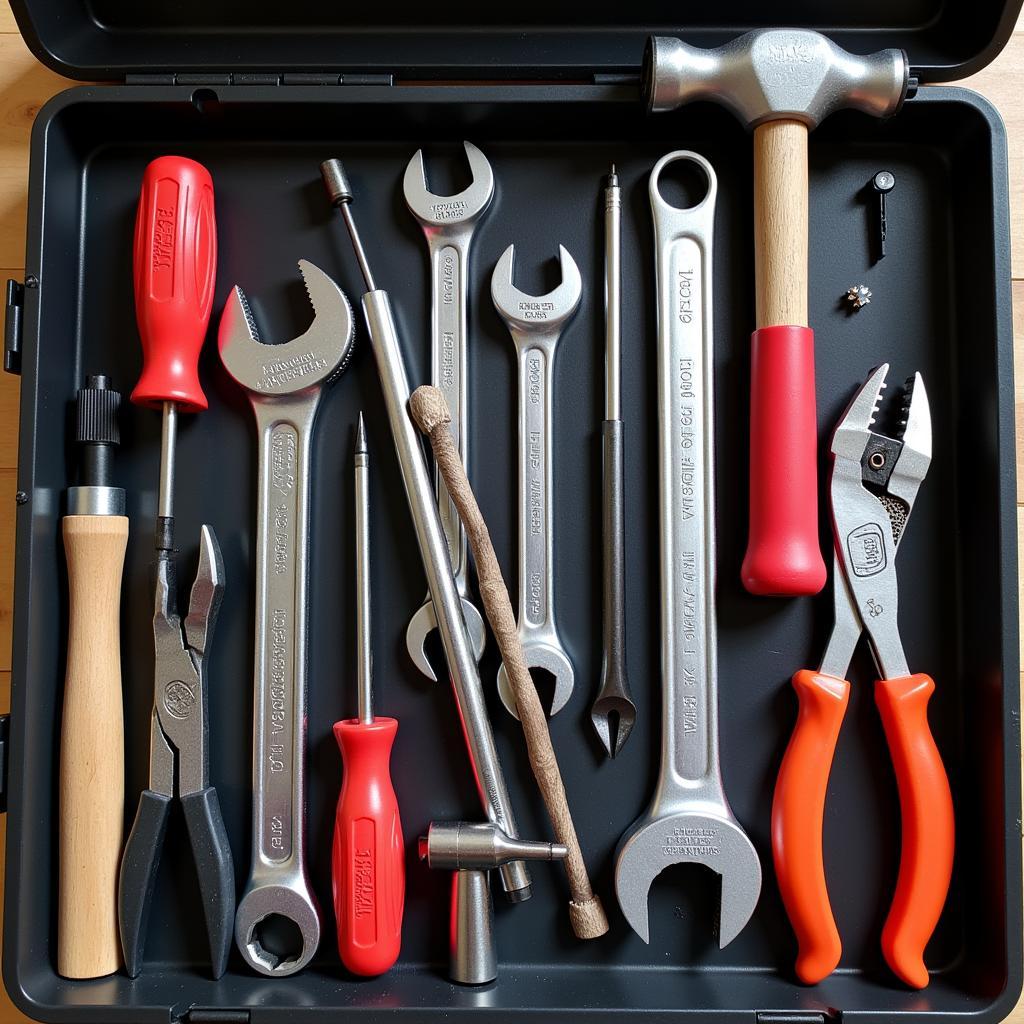Proper Use And Care Of Hand Tools are essential for any mechanic, DIY enthusiast, or even the average homeowner. Neglecting these practices can lead to damaged tools, compromised work quality, and even personal injury. This comprehensive guide will delve into the best practices for maintaining and using your hand tools effectively, ensuring they remain reliable companions for years to come.
Maintaining the sharpness of cutting tools like chisels and saws is crucial not only for clean cuts but also for safety. A dull tool requires more force, increasing the risk of slippage and accidents. Similarly, ensuring wrenches and sockets are the correct size prevents rounding off fasteners, making future adjustments difficult. Regular cleaning and proper storage are equally important aspects of hand tool care, preventing rust and extending their lifespan.
Why Proper Use and Care of Hand Tools Matters
 The Importance of Hand Tool Maintenance
The Importance of Hand Tool Maintenance
From a professional standpoint, the proper use and care of hand tools demonstrate a commitment to quality workmanship. For the DIYer, it’s about achieving satisfying results and avoiding frustration. But most importantly, proper tool maintenance is a matter of safety. A loose hammer head, a chipped chisel, or a rusty wrench can cause serious harm.
You can learn more about maintaining specific hand tools from resources like the klein proper use and care of hand tools pdf.
Cleaning and Storing Your Hand Tools
Dirt, grime, and moisture are the enemies of hand tools. After each use, wipe down your tools with a clean cloth. For stubborn dirt, use a wire brush or a specialized cleaning solution. Applying a light coat of oil to metal surfaces can prevent rust, especially in humid environments. Store your tools in a dry, organized toolbox or on a wall-mounted tool rack. This protects them from damage and makes them easy to find.
What is the best way to clean rusty tools?
Soaking rusty tools in a solution of white vinegar and baking soda can help loosen the rust. After soaking, scrub the rust off with a wire brush or steel wool.
Sharpening Your Cutting Tools
A sharp cutting tool performs better and is safer to use. Use a honing steel or sharpening stone to maintain the edge of your chisels, plane blades, and other cutting tools. Follow the manufacturer’s instructions for the proper sharpening angle.
How often should I sharpen my tools?
The frequency of sharpening depends on the tool and how often it’s used. However, it’s better to hone or sharpen regularly than to wait until the tool becomes noticeably dull.
Check out proper use and care of hand tools pdf for more detailed information.
Using Hand Tools Correctly
Using the right tool for the job is essential for both efficiency and safety. Don’t use a screwdriver as a chisel or a wrench as a hammer. Apply force in a straight line, avoiding twisting or bending motions that can damage the tool or cause injury. Always wear appropriate safety gear, such as eye protection and gloves. Knowing when to replace a worn or damaged tool is crucial.
“A well-maintained tool is an extension of your hand,” says John Smith, a seasoned mechanic with over 20 years of experience. “It allows you to work with precision and confidence.” Taking the time to care for your tools is an investment that pays off in the long run.
Need tips on maintaining your measuring tools? Check out tips on how to take good care of measuring tools.
“Investing in quality hand tools is just the first step,” adds Jane Doe, a master toolmaker. “Proper use and care are essential for maximizing their lifespan and performance.”
Proper use and care of hand tools are fundamental to any workshop, garage, or toolbox. By following these simple yet effective guidelines, you can ensure your tools perform at their best, last longer, and most importantly, keep you safe.
FAQ
- What’s the best way to remove rust from tools? Soaking them in white vinegar and scrubbing with a wire brush is effective.
- How often should I oil my tools? Lightly oiling them after each use, especially in humid conditions, helps prevent rust.
- What’s the best way to store hand tools? A dry, organized toolbox or wall-mounted rack is ideal.
- How do I know when to replace a tool? Replace tools with excessive wear, damage, or those that no longer function effectively.
- Where can I find specific instructions for my tools? Consult the manufacturer’s manual or online resources.
If you’re looking for a tool to remove your car radio, visit tool for removing car radio. Need car jumper tools? Check out car jumper tools.
Need help? Contact us via WhatsApp: +1(641)206-8880, Email: cardiagtechworkshop@gmail.com or visit us at 910 Cedar Lane, Chicago, IL 60605, USA. Our customer service team is available 24/7.

Leave a Reply